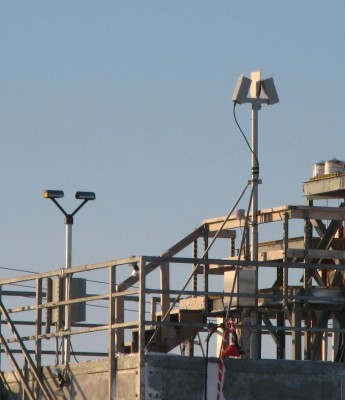
Cloud radars at the ARM sites provide important information about cloud properties and continue to evolve in providing climate researchers more complex data. This creates a greater need to know the absolute calibration of the radar reflectivity measurement. However, the large and immobile antenna for the millimeter wavelength cloud radar (MMCR) is impossible to point directly at a calibration target. At the ARM North Slope of Alaska site in Barrow, two new precipitation sensors from McGill University were recently installed to support an upcoming calibration campaign for the MMCR. This campaign will explore indirect methods to obtain the needed calibration.
One method uses different instruments to infer the calibration through measurement comparisons. The sensors provided by McGill University consist of a Precipitation Occurrence Sensor System, or POSS, and a particle size and velocity, or PARSIVEL, optical instrument. These sensors join the existing baseline precipitation instruments–the Present Weather Sensor and Total Precipitation Sensor–at the Barrow site. Snow and rain rates from the various instruments will be compared in an attempt to determine applicable reflectivity relationships.
Later this spring, another calibration method will use a smaller, 12-inch diameter antenna that is easily and economically characterized on an antenna manufacturer’s test range. Antenna test ranges combine calibrated electronics with calibrated radar targets to provide a very accurate calibration of an antenna. Once installed next to the MMCR antenna, the radar will operate in a “ping-pong” manner, switching back and forth from the small to the large antenna until a large enough data sample has been collected to account for different beamwidths and gains between the two antennas. The data are then statistically analyzed to determine if the radar constant from the small antenna matches that of the main MMCR antenna. This method calibrates the individual components of the radar to gain calibration data for the entire radar.

